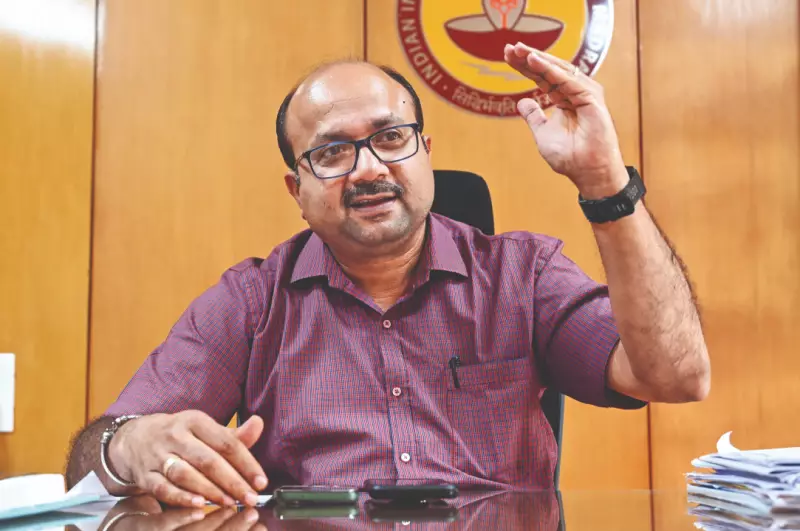
Chennai faces an inevitable cycle of floods and droughts that cannot be completely avoided, according to Professor Balaji Narasimhan from IIT-Madras' Civil Engineering Department. The expert, who works with the government to design sustainable drainage systems, emphasizes that strategic urban planning and integrated water management are crucial for improving the city's water security.
Increased Flood Risk This Season
The India Meteorological Department forecasts a slightly above-normal northeast monsoon for the Chennai region, with approximately a 60% chance that rainfall from October to December will be about 12% above seasonal averages. Combined with already saturated soil from above-normal southwest monsoon rains and filled water bodies, this significantly elevates flood risks for the coming season.
Revolutionary Flood Forecasting System
Following the devastating 2015 floods, the Tamil Nadu government initiated a groundbreaking real-time flood forecasting and spatial decision support system for Chennai. Funded by the World Bank and technically supervised by IIT-Madras through TNUIFSL, this comprehensive system represents India's first state-of-the-art flood forecasting for a major metropolitan city.
The project has deployed hundreds of sensors and established multiple flood modeling control rooms across Chennai river basin districts. This advanced system provides early flood warnings and supports disaster management agencies with real-time data, while also assisting in designing flood mitigation measures at various scales.
Accuracy Challenges and Improvements
While the predictive models demonstrate reasonable accuracy, Professor Narasimhan acknowledges limitations. Factors like clogged stormwater drains and localized storms that escape existing rain gauge networks affect prediction precision. Ongoing efforts to improve radar coverage over Chennai and integrate these observations into models are expected to enhance accuracy within the coming years.
Why Chennai's Water Woes Persist
Despite technical expertise, Chennai cannot completely escape floods and droughts. The professor stresses that sustainable urban planning integrating water-sensitive design concepts is crucial. Recent government initiatives include deploying 1,000 automatic rain gauges across Tamil Nadu, with data accessible through the TN-Smart system for multi-hazard assessment.
Academic institutions like IIT-Madras and Anna University collaborate with the government on multiple fronts, including developing real-time flood forecasting, utilizing abandoned quarries for water supply, implementing tertiary treatment systems, recycling treated wastewater for industrial use, and lake rejuvenation projects.
International Models and Local Solutions
While every city has unique characteristics, Chennai can learn from successful practices in Singapore, Tokyo, and Seoul. A significant challenge lies in fragmented infrastructure management, where water supply and sewerage fall under CMWSSB, while stormwater drainage and solid waste disposal remain with Greater Chennai Corporation.
Professor Narasimhan advocates consolidating these functions under a single umbrella agency, similar to Singapore's Public Utilities Board, to enable integrated management of water supply, storm drainage, and sewage disposal. This approach would prevent sewage mixing with stormwater and reduce solid waste dumping into water bodies.
South Korea's experience demonstrates the effectiveness of low-impact development strategies. Between 1962 and 2010, Seoul's impervious areas expanded from 7.8% to 47.7%, causing surface runoff to surge to 51.9%. The country subsequently implemented extensive blue-green infrastructure including green roofs, bioretention cells, permeable pavements, and cisterns to reduce urban runoff and enhance urban ecosystems.
Practical Steps for Citizens
Households and apartment associations can significantly contribute to flood mitigation by ensuring functional rainwater harvesting structures and maintaining sufficient open, porous spaces within their properties. Property developers must adhere to Tamil Nadu Combined Development and Building Rules (2019) to guarantee adequate setbacks and limit maximum plot coverage, allowing water infiltration and reducing runoff.
Reducing paved area coverage in every plot creates essential porous space that minimizes runoff generation across urban areas.
Essential Policy Interventions
The most impactful long-term intervention would be developing a comprehensive drainage master plan coupled with flood hazard-risk-vulnerability and capacity assessment for the city. Based on this assessment, the government should implement a series of projects over multiple years to reduce risks and vulnerabilities.
Such planning would preserve waterways and water bodies, recharge aquifers, and ultimately enhance resilience against both floods and droughts.
Low-Impact Development Initiatives
Professor Narasimhan's team is assessing the feasibility of implementing low-impact development measures including rain gardens, green roofs, permeable pavements, vegetative swales, and infiltration trenches. These solutions aim to minimize runoff from urban areas and increase groundwater recharge during smaller rainfall events that typically cause nuisance flooding.
The research aims to develop methodologies for site selection at regional and local scales, plus a hydrological model framework to incorporate green infrastructure strategies and analyze basin-scale impacts. The findings could inform planning regulations for plot coverage limits and appropriate LIDs for different urban localities to maximize rainwater harvesting.
Special Solutions for Vulnerable Areas
In built-up, low-lying regions like Velachery and Pallikaranai, where clayey soil limits infiltration capacity, drainage requires a three-tier approach: source control at rooftops, at-site management within gated communities, and regional coordination across street clusters. Beyond traditional stormwater drains, regional systems need pumping stations with gates, while individual properties can utilize underground cisterns and surface detention areas to store rainwater and create flood buffers.
Professor Narasimhan emphasizes that Chennai's natural assets—water bodies, oceanfront, and tidal systems—provide natural drainage channels that should inform urban planning. Addressing the city's water challenges requires concerted efforts and difficult decisions over the next decade from both government and citizens, particularly in western regions where traditional development approaches could worsen flooding situations.





